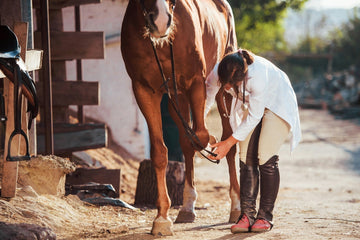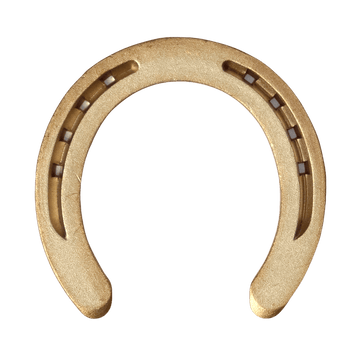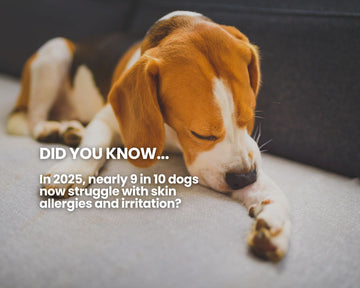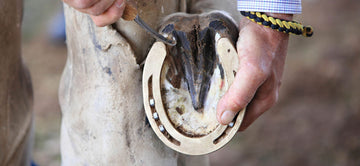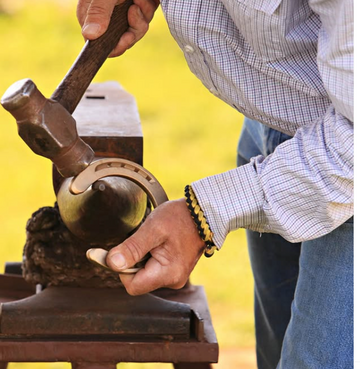The health of a horse’s hooves is essential to its overall well-being. Hoof problems in horses are a significant concern for horse owners, as they can lead to lameness, discomfort, and other complications.
A thorough understanding of the anatomy of a horse’s hoof and the common hoof problems that arise can help ensure proper care and treatment.
This guide provides an overview of the anatomy of the horse’s hoof, common hoof problems, their causes, and solutions to promote optimal hoof health.
Anatomy of the Horse’s Hoof
Understanding the anatomy of a horse’s hoof is the first step in identifying and treating common hoof problems. The horse's foot, comprising the hoof and its internal structures, is vital for the horse's movement and overall health.
The structure of the hoof is intricate, and each part plays a critical role in the horse’s overall movement and health.
-
Hoof Wall: The outermost layer of the hoof structure, which provides protection to the sensitive parts of the horse’s foot.
-
White Line: The visible part of the laminar layers within the equine foot that serves as a connection between the hoof wall and the internal hoof structures.
-
Insensitive Laminar Layers: These connect to the inside face of the hoof wall, playing an essential role in supporting the horse’s weight and providing structure.
-
Navicular Bone: A small, boat-shaped bone located within the horse’s hoof, essential for movement and bearing weight.
-
Deep Digital Flexor Tendon: This tendon runs along the back of the hoof and is crucial for proper movement and hoof functionality.
Structure of the Hoof Wall
The hoof wall is the outermost layer of the horse’s hoof, composed of a hard, protein-based material that protects the inner tissues. It is made up of three layers: the periople, the hoof wall, and the laminae.
The periople is the outermost layer, a thin, waxy coating that helps to waterproof the hoof. The hoof wall is the middle layer, a hard, compact layer that provides structural support to the hoof.
The laminae are the innermost layer, a series of thin, leaf-like structures that connect the hoof wall to the coffin bone.
The hoof wall is made up of a protein called keratin, which is also found in human hair and nails. The keratin molecules are arranged in a specific pattern to provide strength and rigidity to the hoof wall.
The hoof wall is also rich in minerals such as calcium and phosphorus, which help to harden and strengthen the hoof.
The structure of the hoof wall is important for maintaining the overall health and integrity of the horse’s hoof. Any damage or disease that affects the hoof wall can have serious consequences for the horse’s overall health and well-being.

Common Hoof Problems
Horse's hoof health is incredibly important, with studies showing that up to 85% of horses experience some form of hoof disorder during their lifetime.
Understanding these problems and their causes can help owners take proactive steps to care for their horses.
Hoof Abscesses
A hoof abscess occurs when bacteria or fungi enter the hoof, causing an infection. This is one of the most common causes of sudden and severe lameness.
-
Symptoms: A hoof abscess typically causes severe pain, swelling, and heat in the affected foot. The horse may exhibit lameness, and a pounding digital pulse can often be felt.
-
Treatment: Abscesses require proper drainage. The farrier or veterinarian will create an opening to allow the infection to drain, followed by cleaning and application of bandages to keep the area sterile.
Thrush
Thrush is a bacterial or fungal infection that affects the frog of the hoof, typically in damp or unsanitary conditions.
It is particularly important to maintain clean, dry conditions to prevent infections, especially in the hind feet where the risk is heightened.
-
Symptoms: The infected area will often have a black, foul-smelling discharge. Thrush is most commonly seen in the center and grooves of the frog.
-
Treatment: Thorough cleaning and removing necrotic tissue are essential. Owners should use an antifungal or antibacterial solution, such as iodine, to treat the infection.
Hoof Bruises
A hoof bruise occurs when there is trauma to the hoof, causing bleeding within the hoof tissues.
-
Symptoms: Visible discoloration on the sole or hoof wall, and signs of discomfort or limping.
-
Treatment: Rest and possibly additional protection such as pads, boots, or wraps are recommended to alleviate pain and promote healing.
Hoof Wall Problems
Hoof cracks or tears in the hoof wall can occur due to improper trimming, injury, or excessive moisture exposure. In more serious cases, conditions like white line disease can affect the integrity of the hoof wall.
-
Symptoms: Hoof wall cracks or splits, and separation of the hoof wall, particularly at the white line.
-
Treatment: Depending on the severity, treatments may include the use of glue-on patches, bar shoes, or other devices to stabilize and protect the hoof.
Laminitis and Founder
Laminitis is a painful and potentially debilitating condition that affects the horse’s hoof. It is characterized by inflammation of the laminae, the thin, leaf-like structures that connect the hoof wall to the coffin bone.
This inflammation can cause the laminae to become damaged, leading to a range of symptoms including lameness, heat in the hoof, and a strong pulse.
Founder is a more severe form of laminitis, in which the coffin bone becomes detached from the hoof wall and sinks downward into the hoof. This can cause severe pain and lameness, and can even lead to permanent damage to the hoof.
Laminitis and founder are often caused by a combination of factors, including obesity, poor nutrition, and hoof problems. Treatment typically involves a combination of rest, pain management, and hoof care, and may also involve changes to the horse’s diet and exercise routine.
Navicular Disease
The navicular bone is a crucial part of the horse’s hoof structure. The horse's hoof is vital for overall equine health, as it can be affected by various health issues such as laminitis, hoof cracks, and other problems that can lead to lameness.
When this bone suffers from navicular disease, it leads to the gradual deterioration of the surrounding tissue, which can cause chronic pain.
-
Symptoms: Horses with navicular disease often show intermittent lameness, a worn toe, or heel pain.
-
Treatment: Managing navicular disease involves a combination of NSAIDs, corrective shoeing, and sometimes joint injections to reduce inflammation and pain. Veterinary consultation is essential for tailored treatment.
Nutrition and Hoof Health
A horse's overall diet plays a significant role in the health of its hooves. The hooves need a balanced diet with sufficient nutrients to grow strong and healthy.
-
Methionine: A sulfur-containing amino acid that is a precursor to cysteine, an amino acid important for hoof strength and structural integrity.
-
Vitamins and Minerals: Key vitamins and minerals, such as biotin, zinc, and copper, are essential for healthy hoof growth. Regular supplements can support hoof strength, particularly in horses with weak or brittle hooves.
Hoof Care and Maintenance
Maintaining a horse's hooves involves more than just feeding your horse the right diet. Regular trimming and shoeing are necessary for hoof health.
-
Regular Trimming: Hooves should be trimmed every 4 to 6 weeks to ensure that they remain balanced and functional. Without regular trimming, hooves can become overgrown and lead to imbalances or injuries.
-
Shoeing: For horses that need additional protection, horseshoes may be necessary, particularly if the horse works in demanding conditions. Horses that experience frequent hoof bruises or those that work on hard ground may benefit from the added support.
Hoof Boots and Pads
Hoof boots and pads are devices that are designed to provide additional support and protection to the horse’s hoof. They are often used to treat a range of hoof problems, including laminitis, founder, and white line disease.
Hoof boots are designed to fit over the horse’s hoof, providing additional support and protection to the hoof wall and sole. They are often used to treat laminitis and founder, and can help to reduce pain and lameness.
Hoof pads are designed to fit inside the horse’s hoof, providing additional cushioning and support to the sole. They are often used to treat white line disease and other hoof problems, and can help to reduce pain and lameness.
Both hoof boots and pads can be an effective way to provide additional support and protection to the horse’s hoof, and can help to promote healing and recovery. However, they should only be used under the guidance of a qualified veterinarian or farrier, as improper use can cause more harm than good.
Paddock Management
Paddock conditions play a vital role in maintaining hoof health. Excess moisture or overly wet conditions can contribute to hoof problems like thrush or soft hooves.
-
Dry Conditions: It’s crucial to ensure that the turnout area is dry and that standing water is minimized.
-
Gravel: Placing round, pea-sized gravel in the horse’s paddock can help with drainage and reduce excess moisture around the hooves.
Prevention and Treatment
Vigilance is key when it comes to maintaining hoof health. Routine farrier care, proper diet, and monitoring the hooves for any signs of trouble can help catch problems early.
-
Supplements: Many horse owners use hoof supplements to support hoof growth and strength. These supplements often contain essential vitamins and minerals that contribute to overall hoof health.
-
Magnetic Therapy: Advanced horse products such as magnetic hoof boots and therapy wraps can help improve circulation and promote healthy hoof growth.
Frequently Asked Questions
What Are Common Foot Diseases in Horses?
Common hoof diseases in horses include laminitis, thrush, navicular disease, and white line disease. Seedy toe, a condition characterized by the separation of the hoof wall, is often associated with white line disease.
This condition can lead to serious complications, including the displacement of the coffin bone and potential infections, necessitating accurate diagnosis and treatment, including corrective trimming and shoeing.
What Can Be Mistaken for Laminitis in Horses?
Hoof abscesses, bruising, or other types of lameness can often be mistaken for laminitis, but the symptoms and treatment methods are different.
What Do Unhealthy Horse Hooves Look Like?
Unhealthy hooves may show signs of cracks, splits, bruising, excessive wear, or abnormal growth patterns. Discoloration and unusual odor can also indicate infection.
What Is the Best Treatment for Sore Hooves in Horses?
The best treatment includes rest, appropriate hoof care, and possibly the use of cushioned boots or pads to alleviate discomfort. In some cases, farrier intervention or veterinary care is required.
Understanding the Problems with Horses' Feet Conclusion
Hoof problems are common but preventable with proper care, attention, and early intervention. Regular trimming, balanced nutrition, the right horseshoes, and vigilance for signs of trouble can go a long way in preventing serious hoof issues.
Whether dealing with simple issues like bruising or more serious conditions like navicular disease, early detection and treatment are crucial for maintaining your horse's health and well-being.
By working closely with your farrier and veterinarian, you can help ensure your horse stays happy, healthy, and sound for many years to come.

